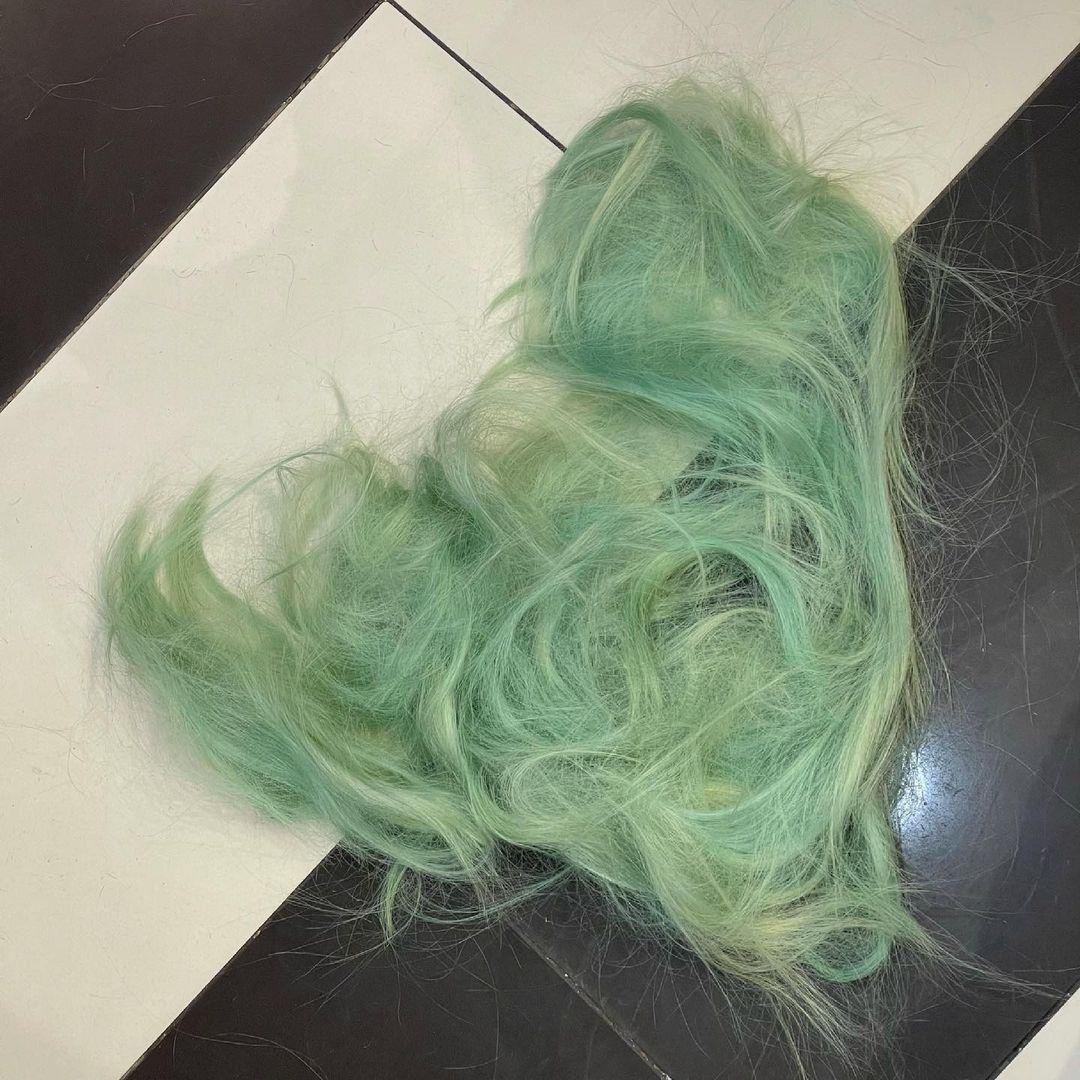How to fix your DIY box dye fails, according to a pro hairstylist (and why you should avoid box dyes forever)

Has the FMCO once again left you bored enough to warrant an at-home makeover? Has said makeover gone very, very wrong? It’s okay—this is a judgement-free zone. If you’ve caved and succumbed to the allure of a DIY hair makeover, only to find that it doesn’t look salon-fresh, fret not—we’re here to help.
Ahead, we delve into what could have caused your hair mishaps, as well as a few ways to go about fixing them:
How did this happen? What went so, so wrong?
Simply put, the answer to that question is… everything, probably. As you can probably guess from the title, our first tidbit of wisdom for you is to ditch the box dyes altogether. When it comes to hair colour, Isaac Ng, the Senior Director Stylist at Leekaja Singapore, explains that boxed dyes are a slippery slope, and that majority of mishaps occur when users are underprepared and uneducated.
“When using boxed dyes, there are several aspects that need to be considered in order to achieve the user’s desired results: the skill level of the user, their application techniques, getting the proper mixing proportions correct, the compatibility of the colour formula to the hair type, and the hair health or hair damage level,” says Ng. “These are all factors that yield unpredictable results, with patchy and uneven colour as the most common issue, or in the worst-case scenario: permanently damaging your hair.”
Unfortunately, when it comes to box dyes, it’s nearly impossible to control each factor, especially when it comes to overprocessing your hair. Though you may be exact when mixing up the formula and diligent with your application techniques, most box dyes are not one size fits all.
View this post on Instagram
At professional salons, it is standard practice for hair professionals to tailor the colour products used to the current state and history of each individual client’s hair and their desired results. Now, we’re not saying that we don’t have faith in your chemistry skills. That said, you just can’t achieve the same kind of customisation with a box dye from the pharmacy.
So, the best thing you can possibly do for your hair’s sake is to avoid them and DIY hack jobs altogether. As Ng says, “You may think you’re saving money with your DIY dye jobs, but it won’t feel that affordable after a $500 Colour Correction.” When it comes to bleaching and any permanent aesthetic changes, it’s always best to go to a professional—both your wallet and your hair will thank you.
However, if you absolutely must do a DIY job, at least make sure that you’ve done your research beforehand.
READ: How to apply hair colour on your own — 5 lessons I’ve learned from my DIY hair dye jobs
The necessities when it comes to at-home dye jobs
The first step is to use professional dyes exclusively—no more cheap box dyes, thank you. Then, before you even begin, always do a patch test and a strand test, especially if you’ve never used the dye before. Patch tests rule out the possibility of an allergic reaction occurring: Just pick an inconspicuous spot—such as behind the ear or on the elbow crease—and leave it to dry. If you experience any irritation or you feel unwell, do not use it.
Strand tests are a nifty way to see 1) how the colour will come out on your hair and 2) what the condition of your hair will look like post-dye. If, by the end of your experiments, your hair is falling apart and it looks awful, you know what to do (spoiler: do not use it). It is incredibly important to do both tests before you even think about whacking the dye on.
READ: 7 Important things you need to know before going blonde

Further, if your hair is already uneven and/or damaged, please do not try to bleach it or colour it with a box dye—you’re only going to make matters worse. At best, you can use a conditioning, semi- or demi-permanent colour over your pre-lightened hair—these deposit colour without altering your hair shaft, so you won’t risk getting your tresses even more damaged.
NOTE: Unfortunately, this also means that if your hair isn’t pre-lightened, the colour may not show up well.
Your best case scenario is to consult a professional about what to do—but we can guarantee that they’ll frown on you for even mentioning a DIY dye job. If you ignored everything above (or this article came too late, read on to find out what you can do to save your damaged hair.
I have so many regrets. What do I do?
The bad news is that once the damage is done, there isn’t much you can do about it. However, you may be able to turn things around just enough.
Option 1: Cut it all off
View this post on Instagram
READ: A guide to growing your bangs out, according to our favourite celebrities
Obviously, the easiest solution here is to start afresh: Ng recommends trying a classic bob or a textured pixie for your big overhaul. If you’re keen, here are a few looks to serve as inspo!



Option 2: Get a salon colour correction
View this post on Instagram
Option 3: Take better care of your hair than ever before
View this post on Instagram
Aside from a colour correction treatment, you should be keeping on top of your hair care regime. Getting your hair back to a reasonable condition will do wonders in improving its overall appearance—you see, the colour might look awful but at least your hair isn’t fried! To do this, Ng suggests adopting a haircare routine. The essential steps are to 1) Cleanse, 2) Use a conditioner or hair mask, and 3) Use a hair serum or leave-in conditioner.
When it comes to hair masks, you should be using them once or twice a week to keep your hair moisturised. A top tip from the pro himself: “When doing this, the key is to use a wide-toothed comb to disperse the product (and its nutrients) evenly throughout your hair.”
It’s important to use the right hair masks too—if your hair is just dry and brittle, you’re in need of a hydration-intensive mask such as Briogeo’s Don’t Despair, Repair! Deep Conditioning Hair Mask. If, however, the damage has caused your hair to become mushy, gummy, and stretchy, you’re in need of a protein hair mask like the Virtue Labs Restorative Treatment Mask.
READ: 11 Hair masks you need to reincarnate your dead, damaged tresses
In addition to deep conditioning, Ng suggests that you use leave-in sunscreens when headed out, and heat protectants during styling to protect your hair. Taking these extra steps are essential to maintaining healthy hair and preventing the visible signs of ageing.
READ: The best heat protectants for healthy, unsinged hair of every type
If the colour of your hair is really bugging you, as mentioned earlier, you can try your hand at semi- or demi-permanent dyes. Just make sure you’re using colours that are more vibrant, and suitable for the tone of your lightened hair. More on that here.
Finally, just leave your hair alone, please.
Find more hair stories like this here.
| SHARE THE STORY | |
| Explore More |



